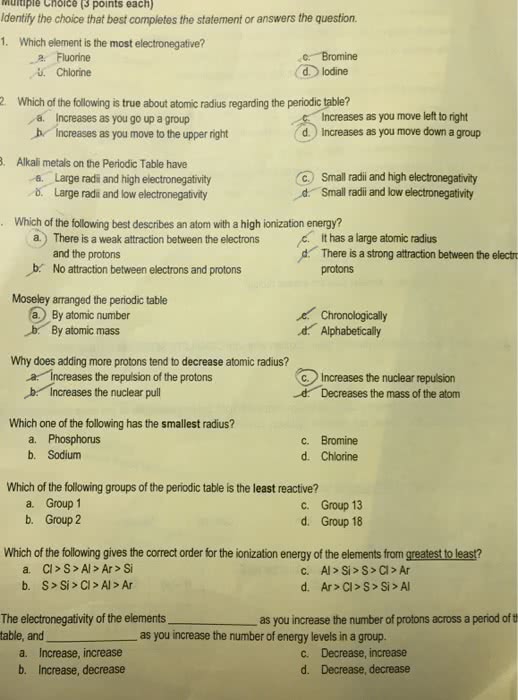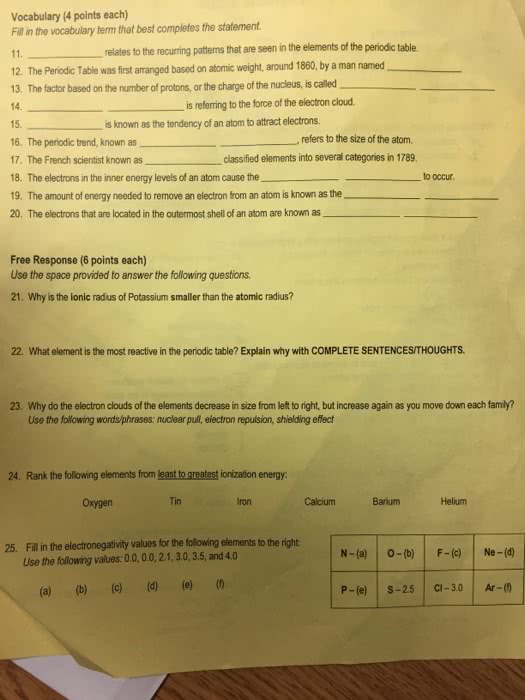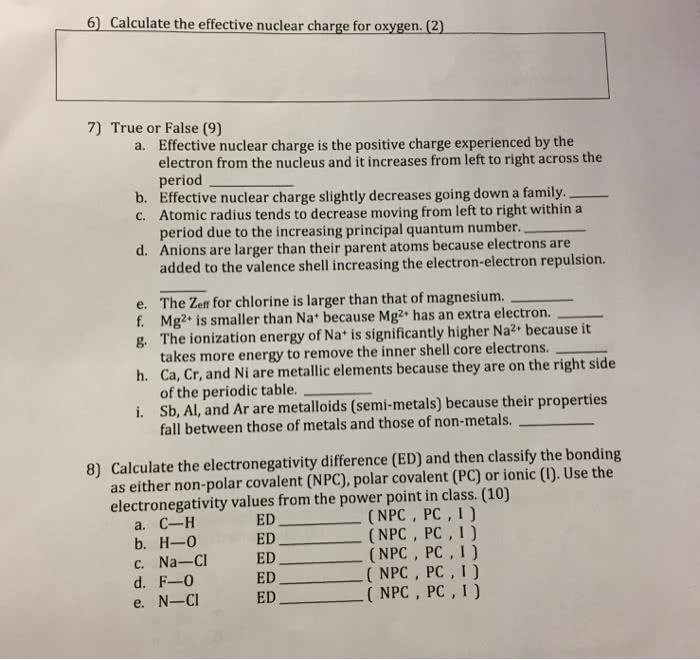CHEM266 Study Guide - Atomic Radius, Fluorine, Vsepr Theory
Document Summary
Effective nuclear charge = # protons - # shielding e- (e- in inner orbital) Increases from left to right of periodic table. Ionization energy minimum energy required to remove an electron. Increases from left to right (atomic radius decreases and effective nuclear charge increases) Decreases as you go down (force of attraction by nucleus decreases) Electronegativity measure of the tendency for an atom in a molecule to attract a pair of electrons. Increases from left to right (greater # protons = stronger nuclear charge) Decreases as you go down (decreasing distance from nucleus) Derived from gas phase bond dissociation energies (amount of energy released when bond forms (-ve value) or the amount of energy needed to break a bond (+ve value) Fluorine (f) is the most electronegative element (top-right corner of periodic table) Bone type look at the difference in electronegativity (between the 2 bonded atoms) ex. 0. 0 to 0. 4 0. 5 to 1. 6 polar nonpolar covalent covalent.



